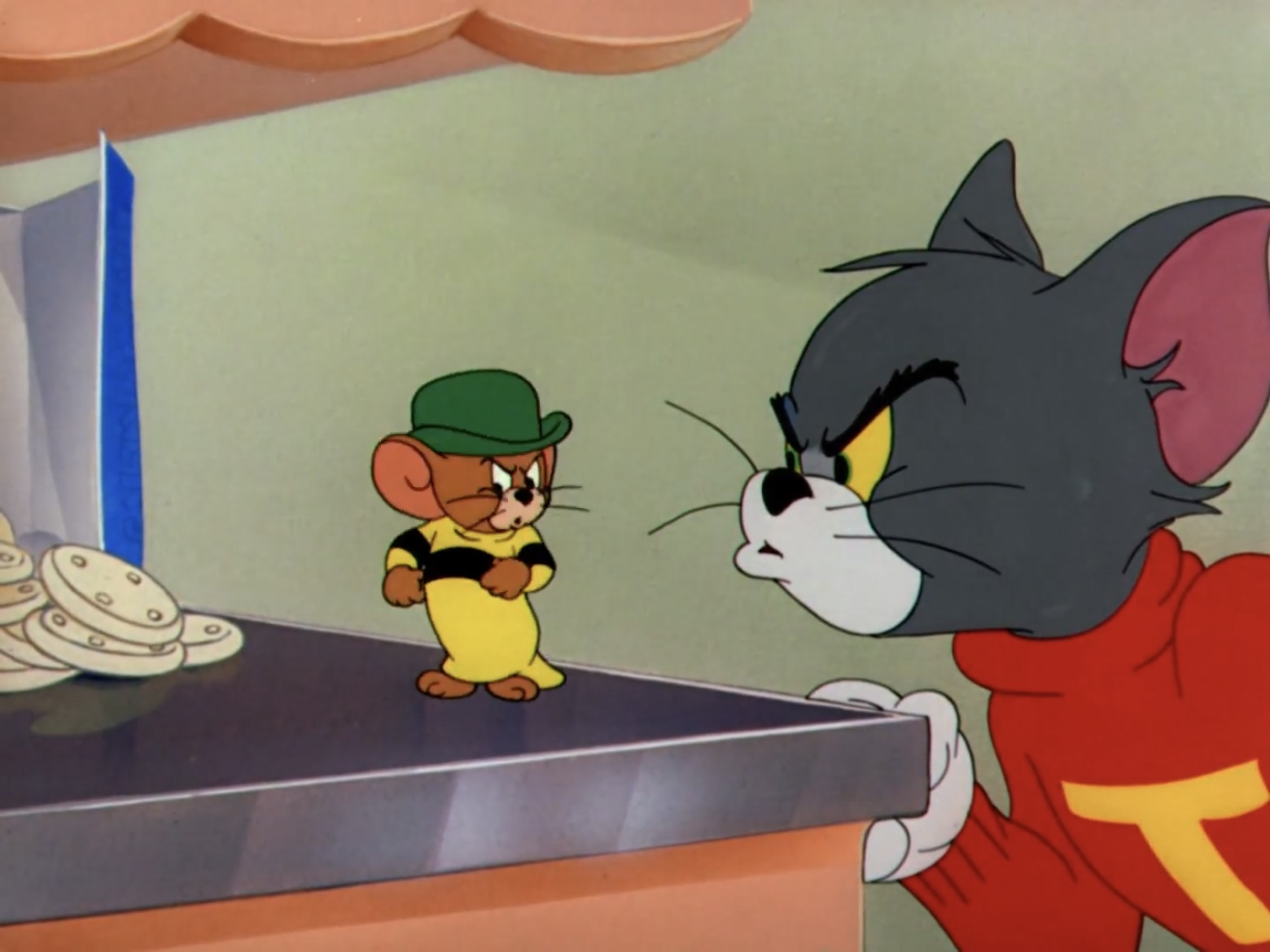This cartoon begins with Tom listening to a spooky radio show called The Witching Hour and being frightened out of his wits. This was in fact a real radio show (it was also known as The Witch's Tale) from the 1930's (it started in 1931). This show helped create the fad of spooky hosts introducing scary stories, a trend which we associate with television personalities like Elvira. The spooky hosts here were Old Nancy, The Witch of Salem, with her black cat, Satan. The original voice of Old Nancy was a woman named Adelaide Fitz-Allen. She however died in 1935 at the age of 75. The voice was then briefly taken over by a 13 year old girl named Miriam Wolfe. She was a part of a children's radio show called Let's Pretend, and never auditioned for the role of Old Nancy. However one time just for fun she did the Old Nancy voice for radio producer Alonzo Dean Cole (who some say did the voice of Satan for the series). She got the part. She did this part briefly, but for some reason unknown to me she eventually stopped doing the voice, and the part was taken over by a woman named Martha Wentworth. Martha Wentworth is actually heard here doing the voice of Old Nancy for this Tom and Jerry cartoon. Back to the story Jerry sees how scared Tom is and decides to have a little fun with Tom, by scaring the poor cat even more out of his wits.
The animation for this film was done by George Gordon, Irven Spence, Cecil Surrey and Jack Zander. All of the had worked on previous Tom and Jerry cartoons and would work on more in the future. Though Tom and Jerry don't talk in this cartoon, their screams, laughs and other noises were provided by William Hanna himself. Bill would continue doing the voices clear into the 1950's. Lillian Randolph returns as the voice of Mammy Two-Shoes and Scott Bradley is still doing the music. Despite all this people working on the film again only William Hanna, Joseph Barbera and Fred Quimby would get credit.
This is an excellent cartoon. The jokes all work great (particularly one about Tom's nine lives), the animation is fantastic and the characters are as well written as ever. The pace here is still slower than future cartoons would be but the pace works perfectly with the material given, and the material is still pure Tom and Jerry slapstick.
-Michael J. Ruhland
Resources Used
Tom and Jerry: The Definitive Guide to Their Animated Adventures by Patrick Brion
https://www.otrcat.com/p/witchs-tale
http://www.imdb.com/title/tt0034753/?ref_=rvi_tt
The animation for this film was done by George Gordon, Irven Spence, Cecil Surrey and Jack Zander. All of the had worked on previous Tom and Jerry cartoons and would work on more in the future. Though Tom and Jerry don't talk in this cartoon, their screams, laughs and other noises were provided by William Hanna himself. Bill would continue doing the voices clear into the 1950's. Lillian Randolph returns as the voice of Mammy Two-Shoes and Scott Bradley is still doing the music. Despite all this people working on the film again only William Hanna, Joseph Barbera and Fred Quimby would get credit.
This is an excellent cartoon. The jokes all work great (particularly one about Tom's nine lives), the animation is fantastic and the characters are as well written as ever. The pace here is still slower than future cartoons would be but the pace works perfectly with the material given, and the material is still pure Tom and Jerry slapstick.
-Michael J. Ruhland
Resources Used
Tom and Jerry: The Definitive Guide to Their Animated Adventures by Patrick Brion
https://www.otrcat.com/p/witchs-tale
http://www.imdb.com/title/tt0034753/?ref_=rvi_tt






